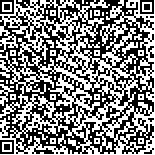| 摘要: |
| [摘要] 目的 探讨磁共振梯度回波T*2加权成像(GRE-T*2WI)参数优化在急性缺血性脑卒中(AIS)患者中的临床应用价值。方法 选取2017年6月至2018年12月在梧州市人民医院就诊的50例AIS患者,男38例,女12例,年龄41~92(65.50±5.90)岁。利用四组参数对每例患者进行GRE-T*2WI检查,并获得四组图像:A组为对照组,B组在A组的基础上减少矩阵、激励次数(NEX)和重复时间(TR),C组在B组的基础上采用并行采集技术并减少TR及回波时间(TE),D组在C组的基础上进一步减少TR、TE和矩阵。对四组图像的扫描时间、图像质量评分、信噪比(SNR)及对比噪声比(CNR)进行比较。结果 A组、B组、C组、D组扫描时间分别为81 s、40 s、15 s和11 s。四组参数图像质量评分、SNR、CNR差异有统计学意义(P<0.05)。A组、B组、C组、D组图像质量评分分别为(3.56±0.28)分、(3.34±0.34)分、(3.00±0.32)分、(1.68±0.40)分。C组与D组图像质量评分差异有统计学意义(P<0.05),C组与A组、B组图像质量评分差异无统计学意义(P>0.05)。D组SNR最高,C组与A组、B组SNR差异有统计学意义(P<0.05),C组与D组SNR差异无统计学意义(P>0.05)。C组CNR最高,C组与A组、D组CNR差异无统计学意义(P>0.05),C组与B组CNR差异有统计学意义(P<0.05)。结论 通过采用并行采集技术以及对矩阵、NEX、TR、TE等参数的适当减少后,GRE-T*2WI扫描时间明显缩短,图像质量达到诊断要求,在临床上对AIS患者诊治具有较大的应用价值。 |
| 关键词: 急性缺血性脑卒中 磁共振 梯度回波T*2加权成像 参数优化 图像质量 |
| DOI:10.3969/j.issn.1674-3806.2024.03.16 |
| 分类号:R 445.2 |
| 基金项目:梧州市科学研究与技术开发计划项目(编号:201702084) |
|
| Exploration on the clinical application value of optimization of magnetic resonance gradient echo T*2 weighted imaging sequence parameters in patients with acute ischemic stroke |
|
LI Yanhua1, YANG Weizhen1, CHEN Peng1,2, LI Ruixiong1, YAN Yejing1, WANG Tianzhao1
|
|
1.Department of Medical Imaging, the People′s Hospital of Wuzhou, Guangxi 543003, China; 2.Department of Medical Imaging, Guangxi International Zhuang Medicine Hospital, Nanning 530022, China
|
| Abstract: |
| [Abstract] Objective To explore the clinical application value of optimization of magnetic resonance gradient echo T*2 weighted imaging(GRE-T2*2WI) sequence parameters in patients with acute ischemic stroke(AIS). Methods A total of 50 AIS patients were selected from the People′s Hospital of Wuzhou during June 2017 and December 2018, including 38 males and 12 females, aged 41 to 92(65.50±5.90)years. GRE-T2*2WI examination was performed on each patient using four parameters, and four groups of images were obtained. Group A was the control group, and group B had the reduced matrix, number of excitation(NEX) and time of repetition(TR) on the basis of group A, and group C adopted parallel acquisition technique and had the reduced NEX, TR and echo time(TE) on the basis of group B, and group D had the further reduced TR, TE and matrix on the basis of group C. The scanning time, image quality score, signal-to-noise ratio(SNR) and contrast-to-noise ratio(CNR) of the images were compared among the four groups. Results The scanning time in group A, group B, group C and group D was 81 seconds, 40 seconds, 15 seconds and 11 seconds, respectively. There were significant differences in the image quality scores, SNR and CNR of the parameters among the four groups(P<0.05). The image quality scores in group A, group B, group C and group D were (3.56±0.28)points, (3.34±0.34)points, (3.00±0.32)points and (1.68±0.40)points, respectively. There were significant differences in the image quality scores between group C and group D(P<0.05). There were no significant differences in the image quality scores between group C and group A as well as between group C and group B(P>0.05). Group D had the highest level of SNR, and there were significant differences in the levels of SNR between group C and group A as well as between group C and group B(P<0.05). There was no significant difference in the level of SNR between group C and group D(P>0.05). Group C had the highest level of CNR, and there were no significant differences in the levels of CNR between group C and group A as well as between group C and group D(P>0.05). There was significant difference in the level of CNR between group C and group B(P<0.05). Conclusion After adopting parallel acquisition technique and appropriately reducing matrix NEX, TR and TE parameters, the scanning time of GRE-T*2WI is significantly shortened, and its image quality meets the diagnostic requirements, which has great application value in the diagnosis and treatment of AIS patients. |
| Key words: Acute ischemic stroke(AIS) Magnetic resonance Gradient echo T*2 weighted imaging(GRE-T*2WI) Parameter optimization Image quality |

